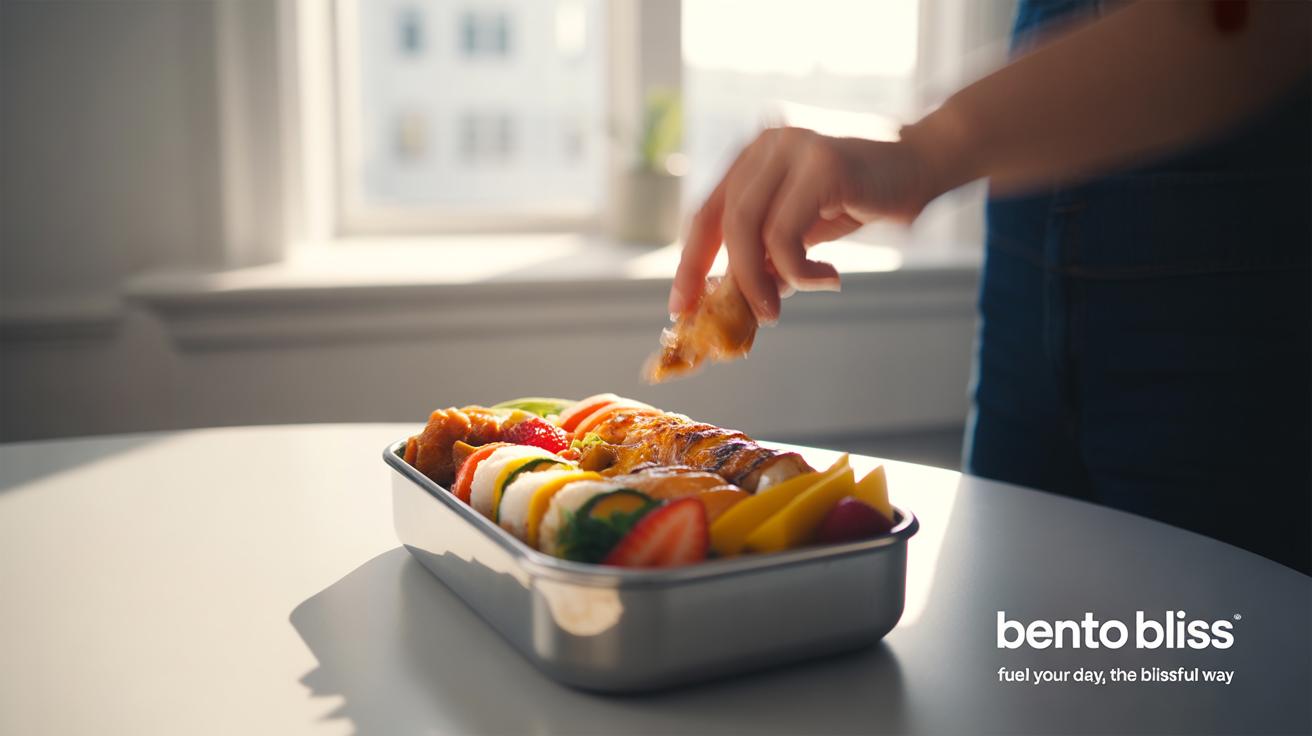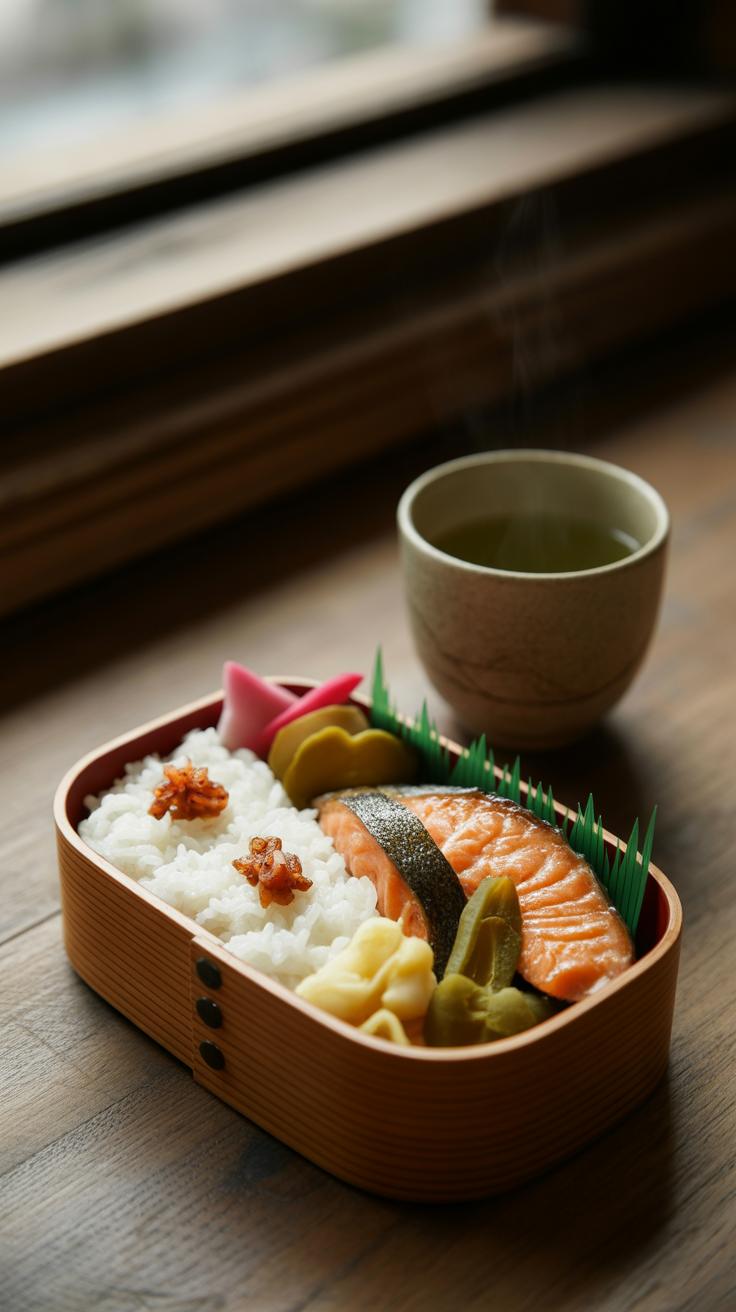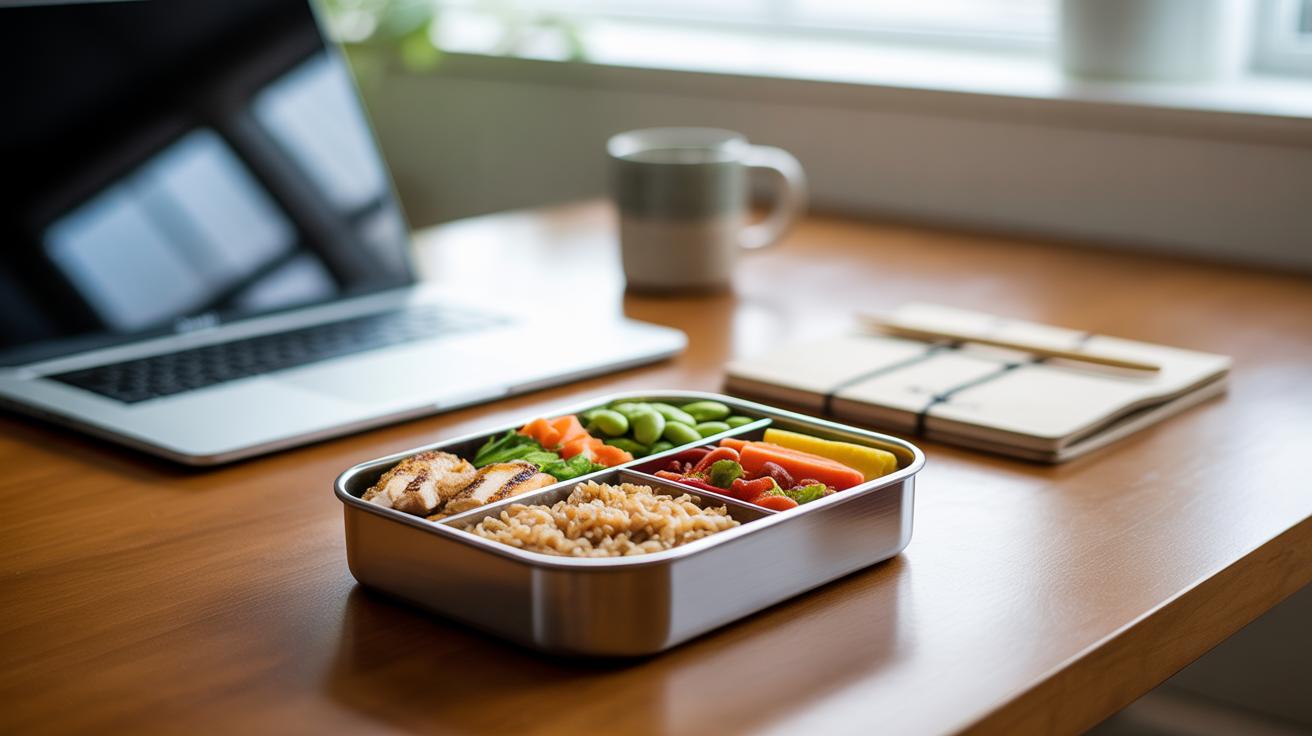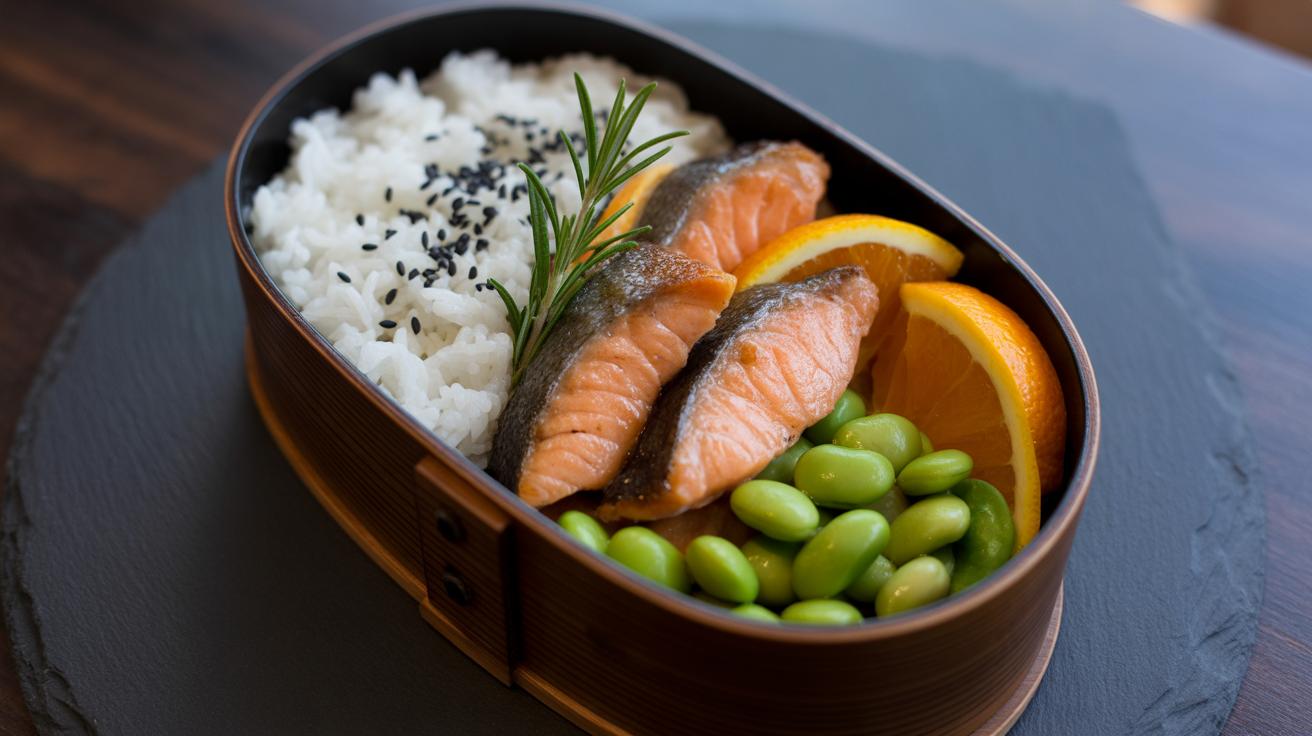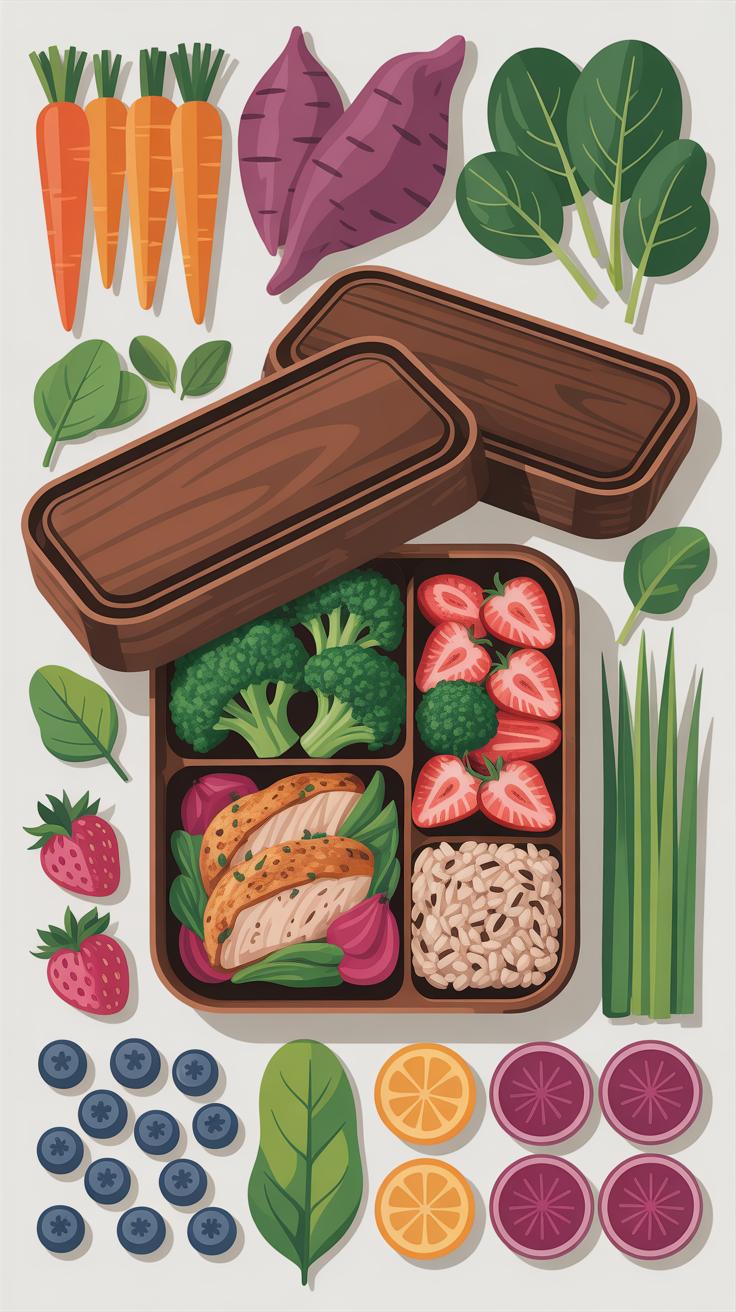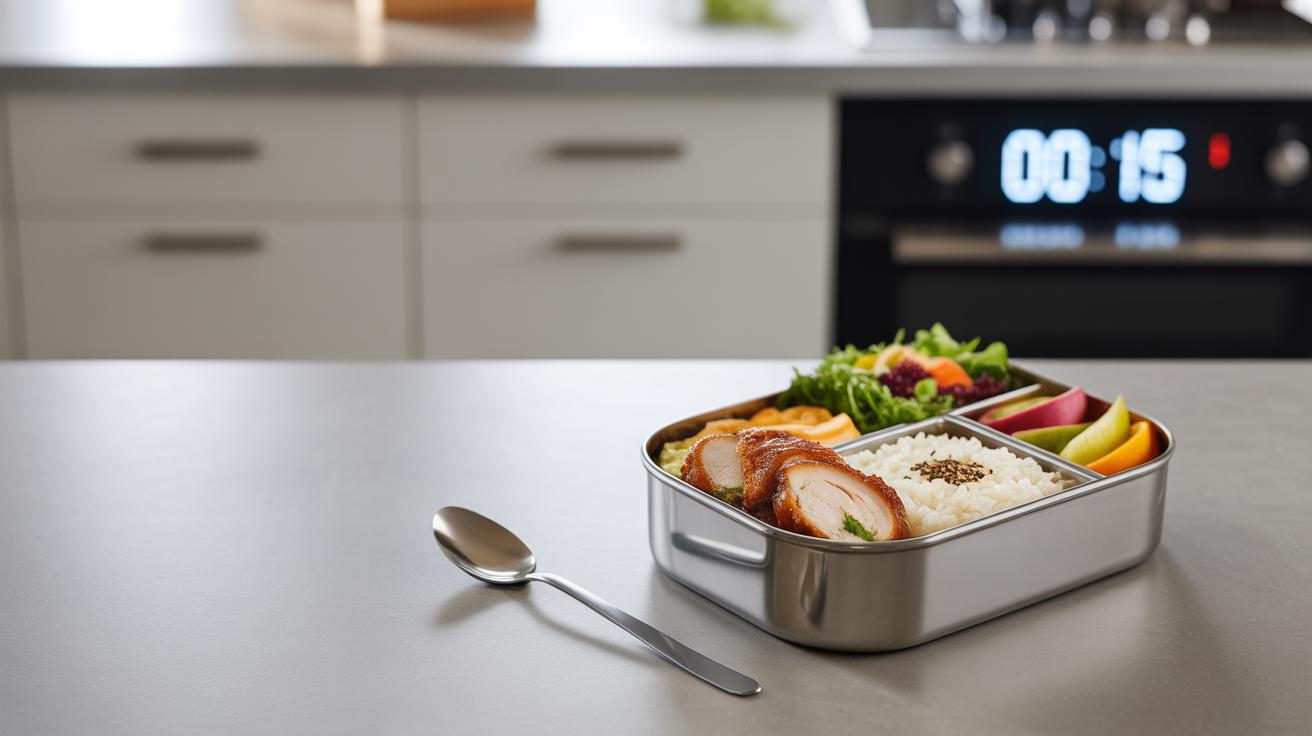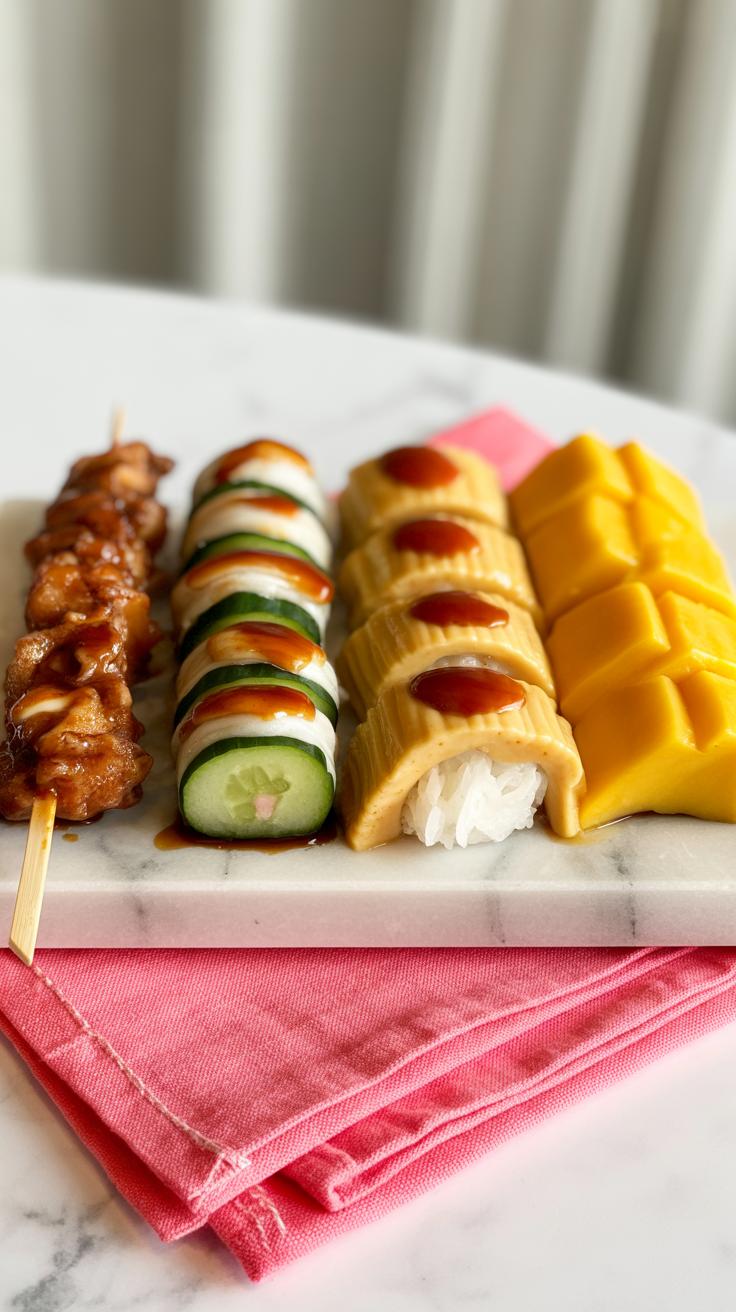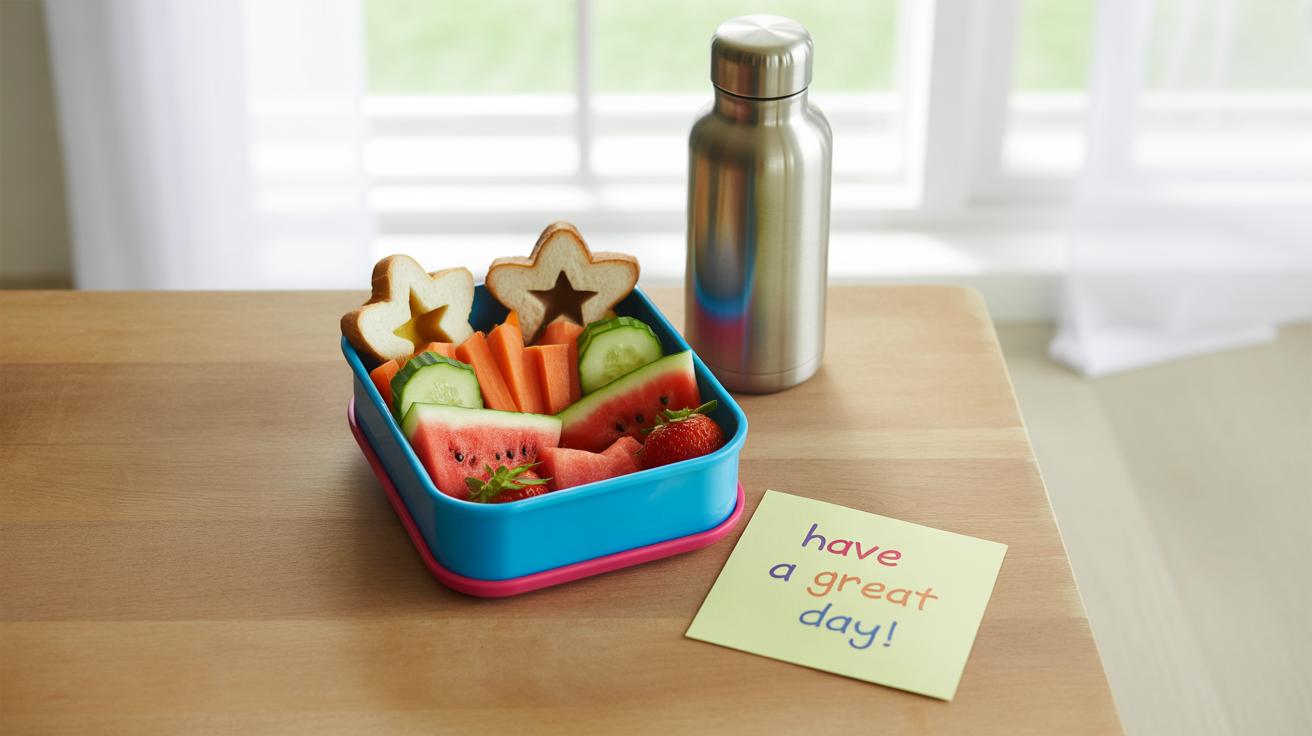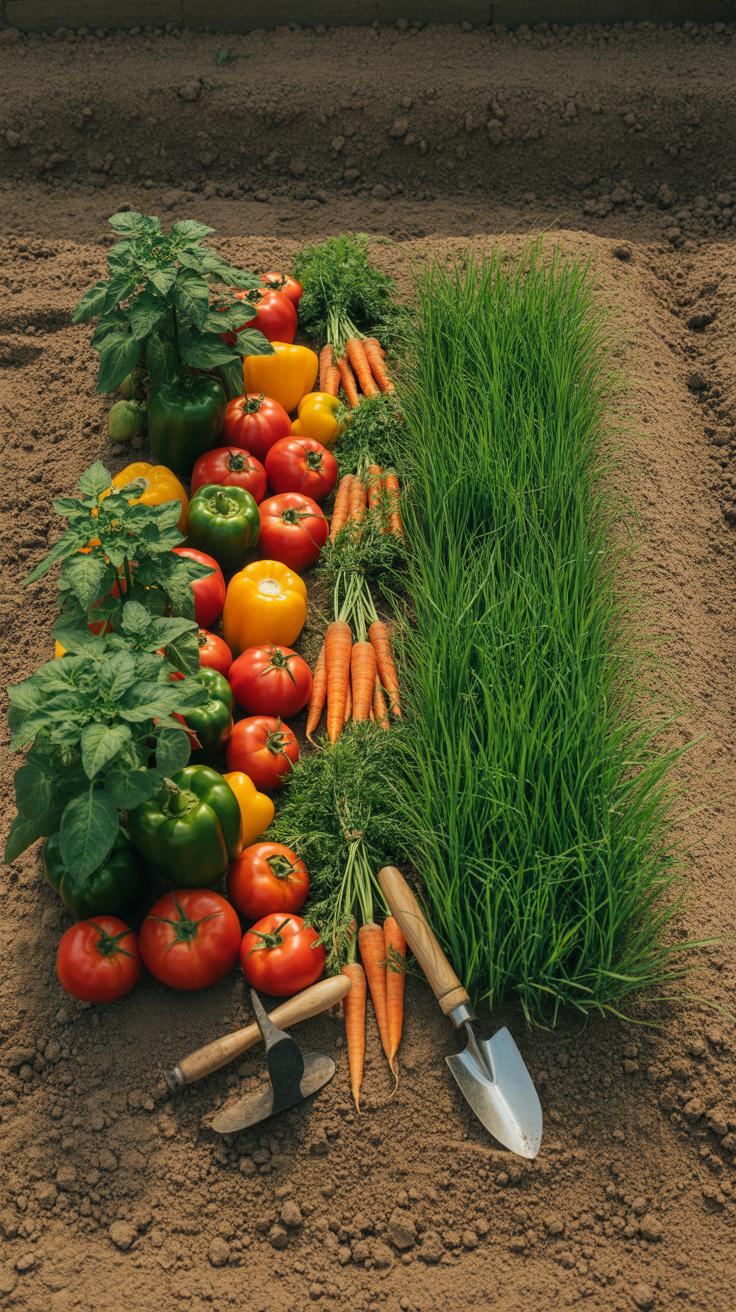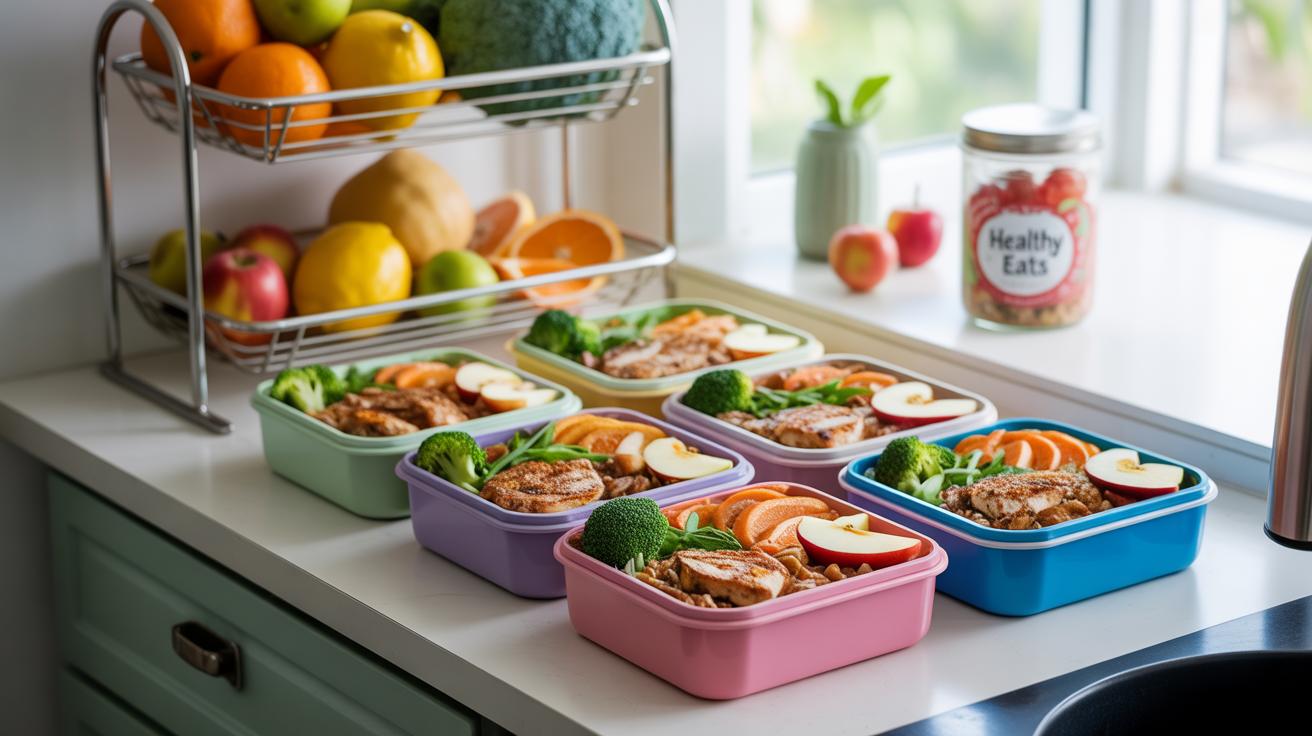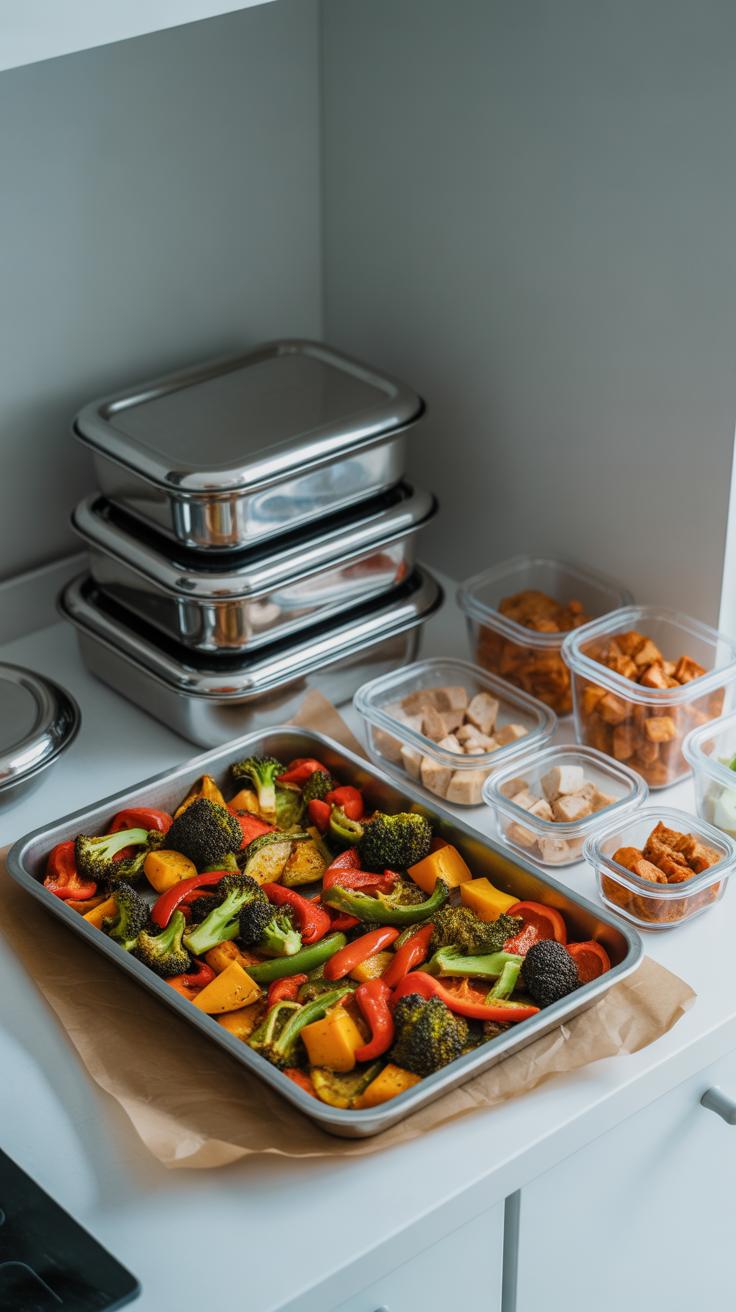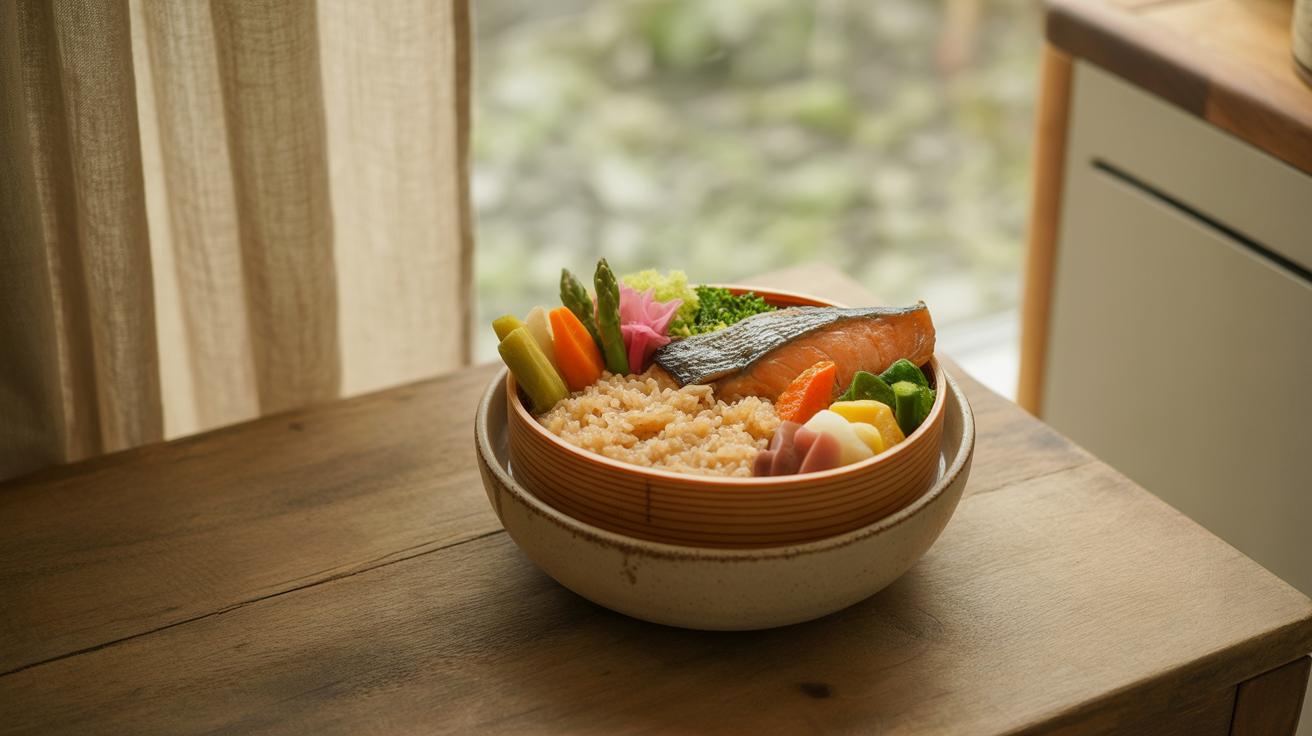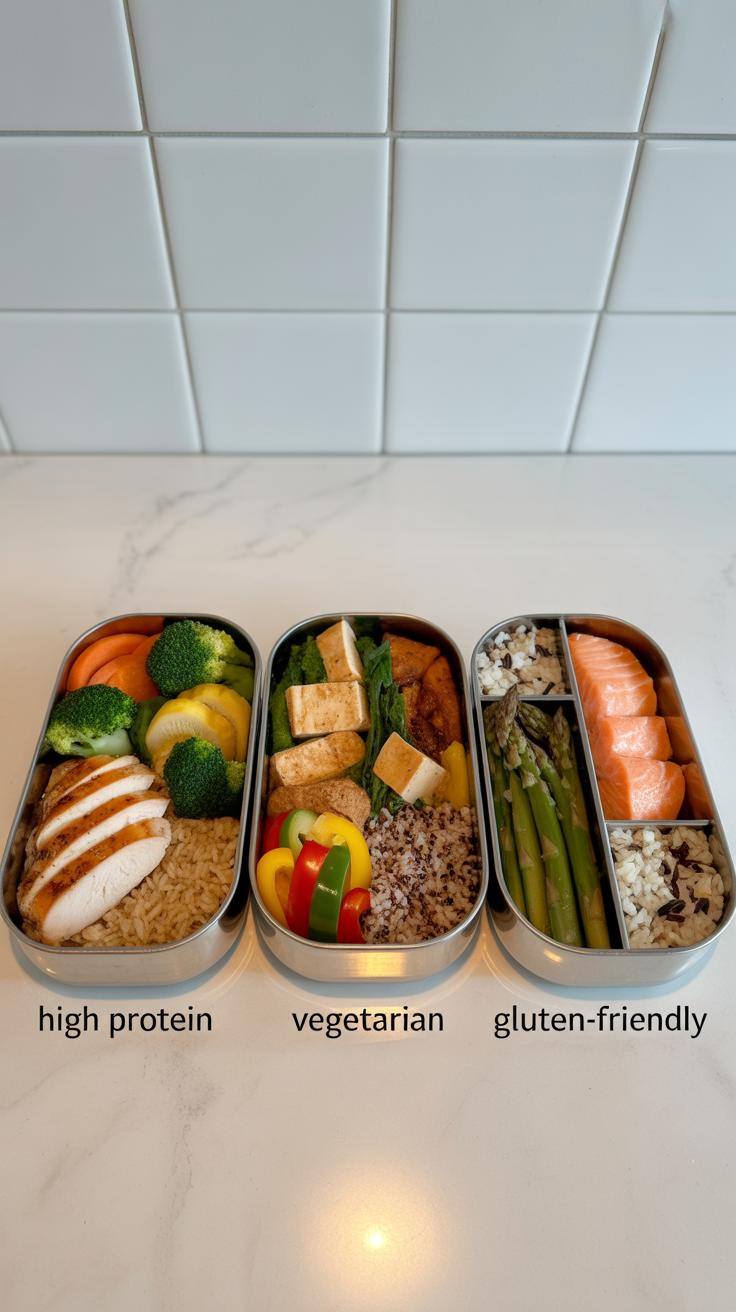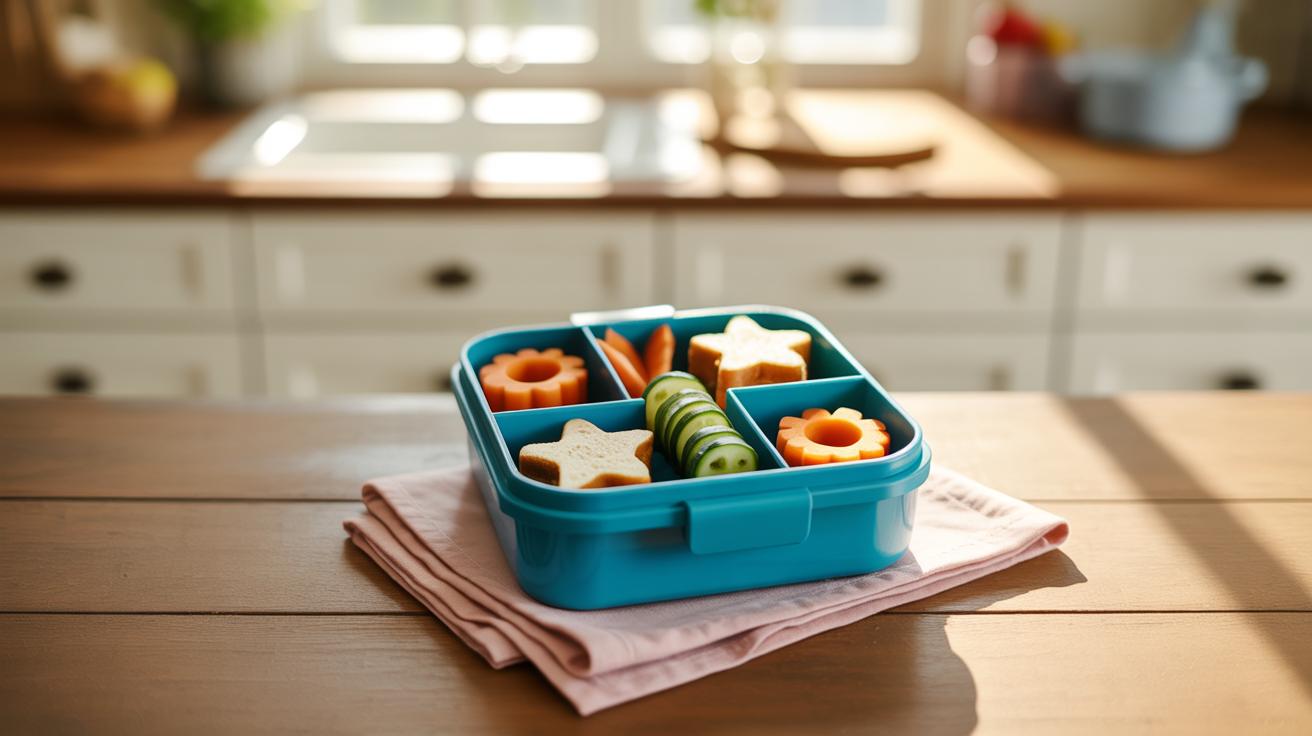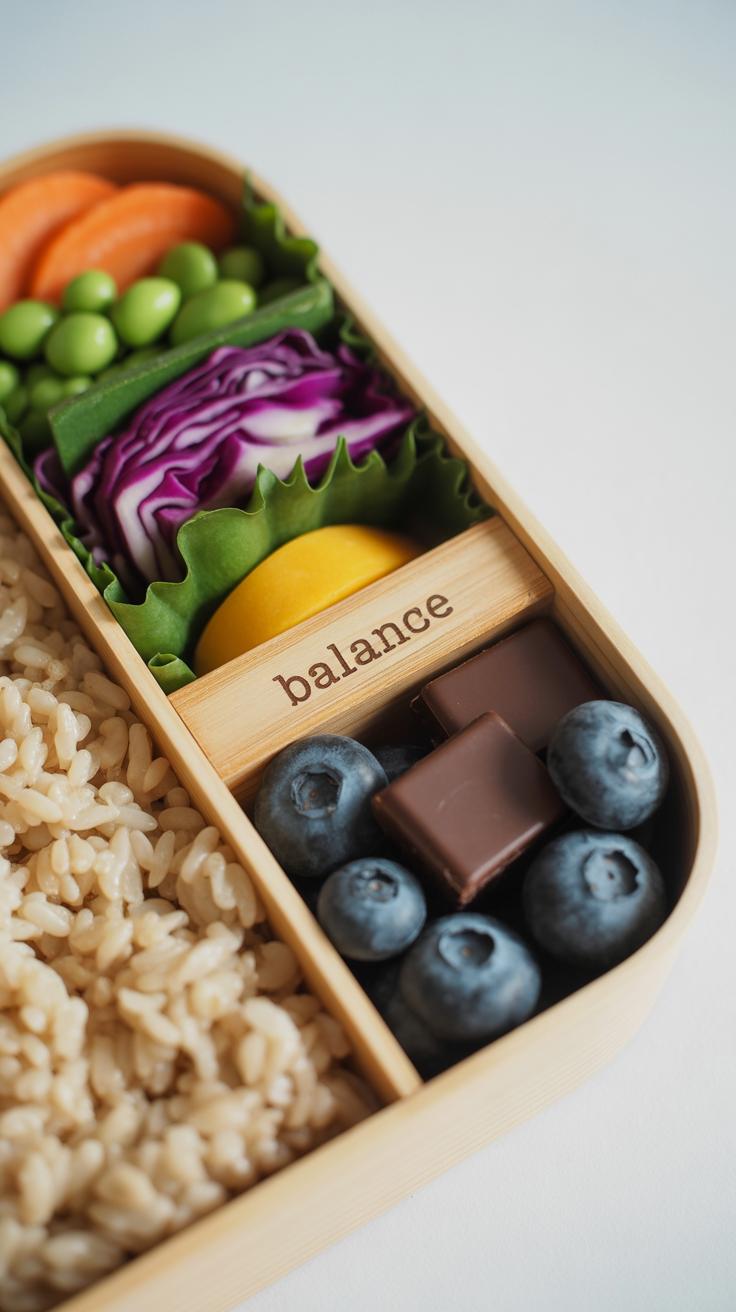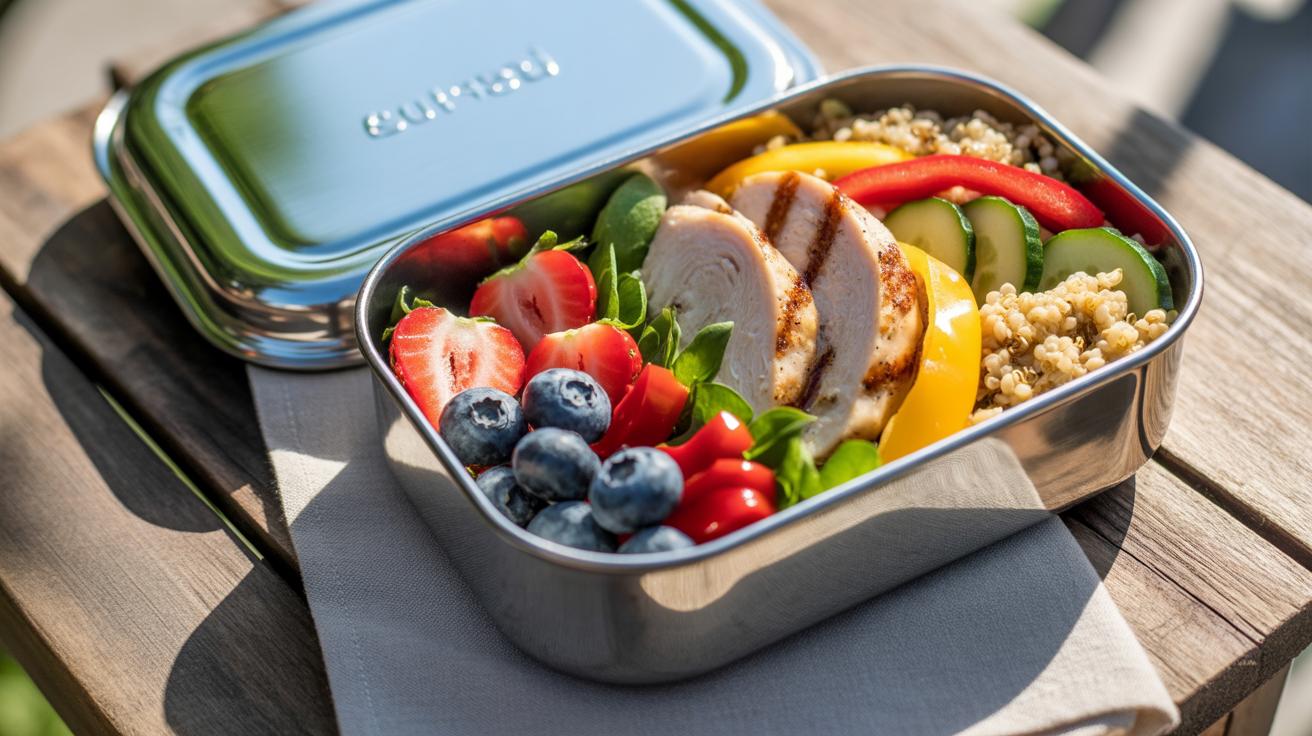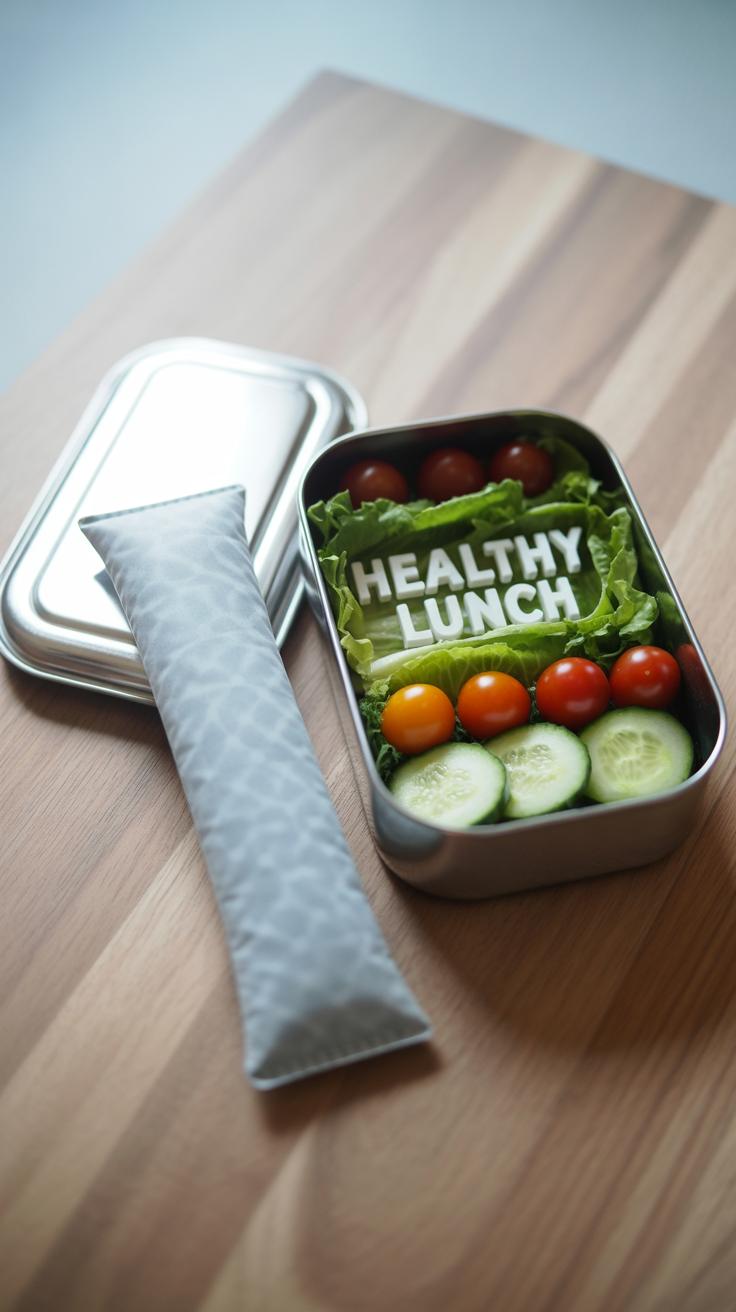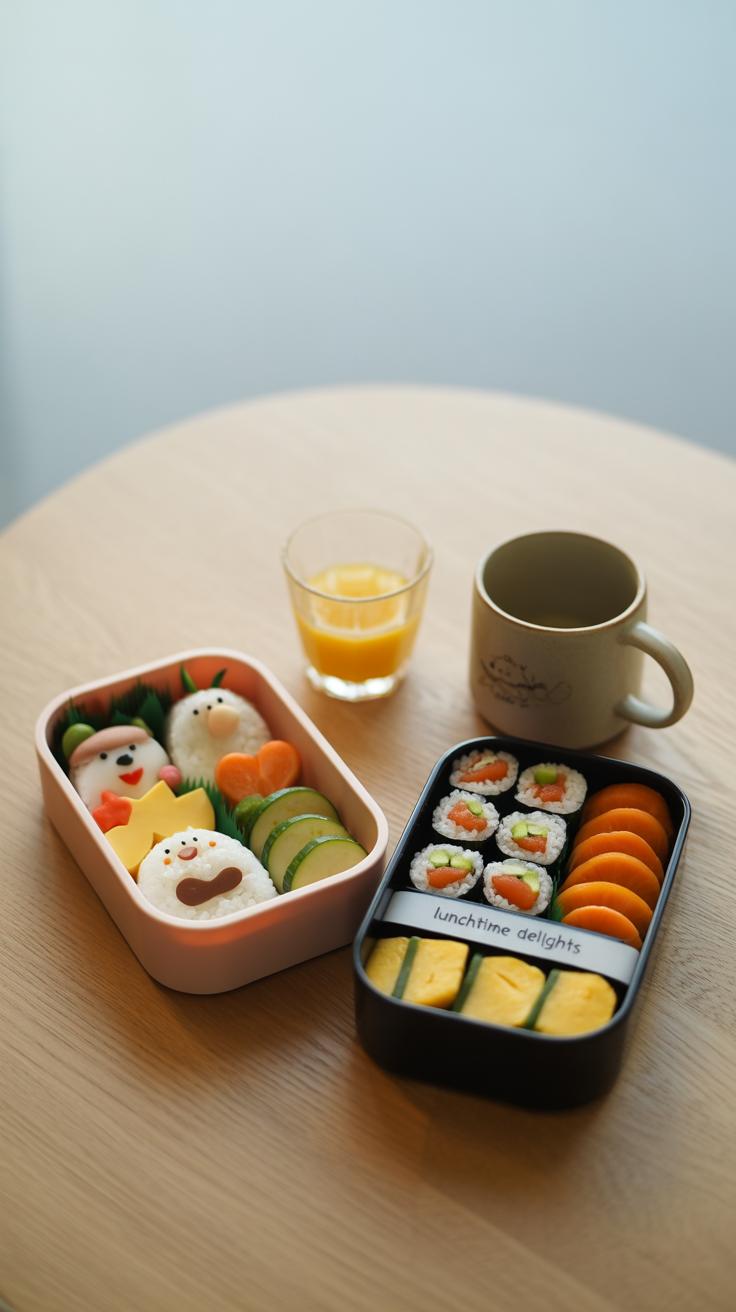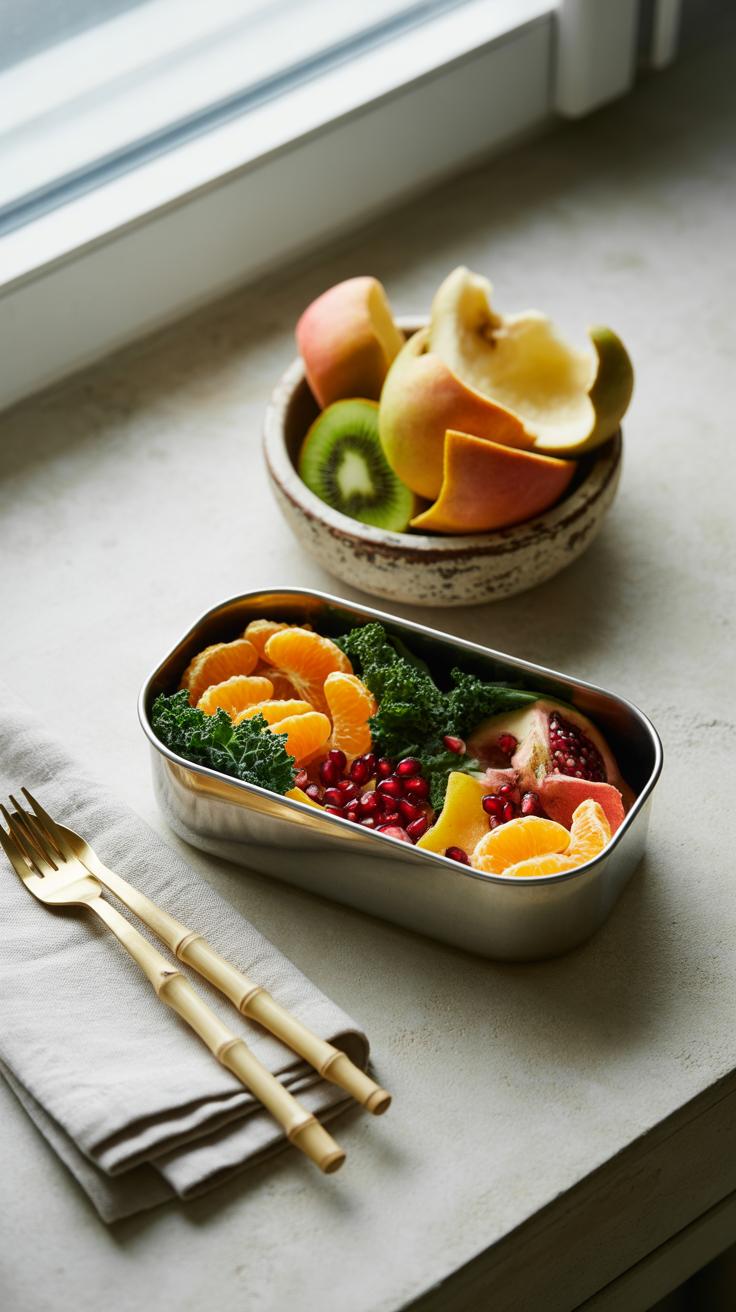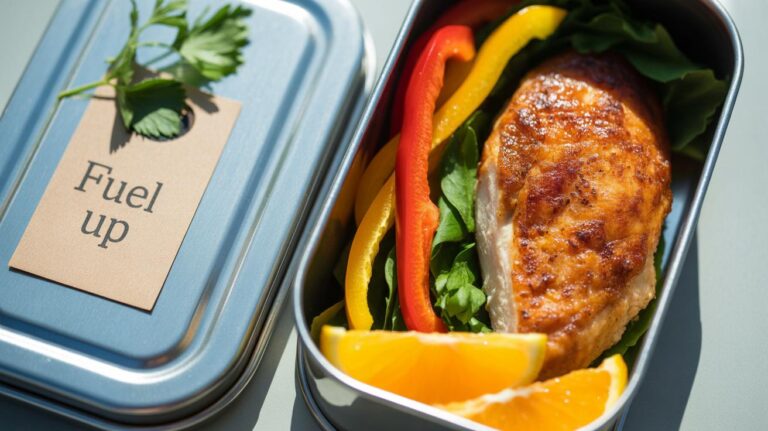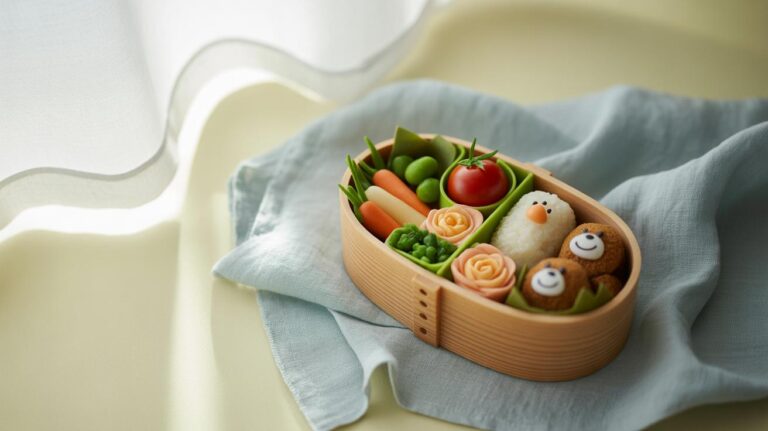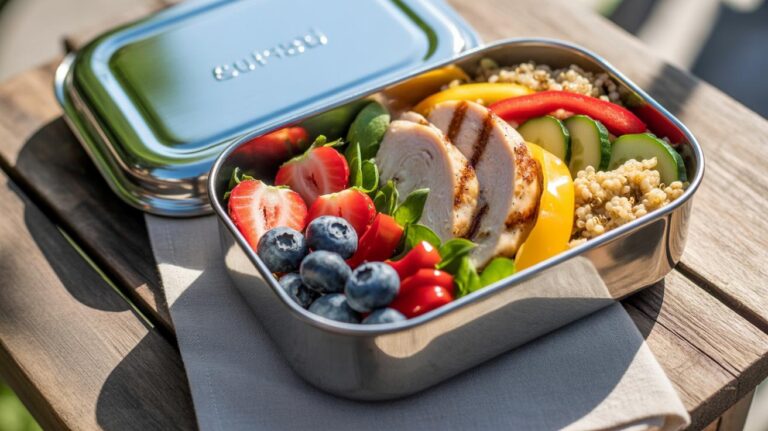Introduction
Bento boxes offer a convenient and enjoyable way to enjoy lunch, especially when you want a meal that keeps you energized throughout the day. Bento Box Lunch Ideas That Disappear By Noon explore the art and science of packing a balanced and tasty meal that suits your taste and schedule. Bento lunches originated in Japan and have become a popular solution for quick yet nutritious meals around the world.
This article takes you through practical bento box ideas that are easy to prepare and pleasant to eat. You will learn how to combine flavors, choose the right ingredients, and present your lunch in a way that appeals to your appetite and nourishes your body. From protein-packed favorites to colorful vegetable options, these ideas will help your lunch disappear by noon, leaving you ready for the rest of your day.
Understanding the Bento Box Tradition
Bento boxes started as simple packed meals in Japan, dating back centuries, though the exact origin is a bit unclear. Originally, they were practical containers for carrying rice, fish, and pickled vegetables during harvests or military campaigns. Over time, these boxes became more refined, symbolizing care and attention to the meal’s balance and presentation. In Japan, a bento is more than just food; it reflects respect for nutrition, aesthetics, and convenience, all packed in a compact form.
Typical bento components often include rice as a staple, a portion of protein such as fish, chicken, or tofu, plus pickled or cooked vegetables. Sometimes, fruits or a small sweet treat complete the meal. This structure provides not just nourishment but also a visually appealing variety of colors and textures.
The idea has crossed borders. In countries like South Korea, Taiwan, and even Western countries, bento-style lunches have evolved to suit local tastes. You might find sandwiches, salads, or pasta replacing rice, while the separation of items remains a key feature. The appeal of portion control and balanced nutrition makes the concept quite universal. It’s interesting how something so rooted in Japanese culture now inspires lunch routines worldwide.
History of Bento Boxes
The first evidence of bento comes from the Kamakura period, around the 12th century, when people started packing cooked rice in small boxes. Initially, these were quite simple and practical—mainly for workers and travelers. Through the Edo period, as societal structure changed, so did the bento’s form. It became more common among common folk and samurai alike. Picnic bentos and festive bentos developed with intricate designs.
Fast forward to modern times, and bento boxes have transformed dramatically. Plastic and thermally insulated containers replaced wooden boxes, making bentos more accessible and widespread. Convenience stores in Japan now offer countless varieties of ready-made bentos, from cheap to elaborate. It’s a shift from handmade artistry to mass-produced practicality, though homemade bentos still hold a special place culturally.
Bento Boxes Around the World
Outside Japan, bentos took on new shapes and ingredients. In Korea, dosirak resembles the bento but includes kimchi and spicy side dishes, reflecting local flavors. Taiwan’s bentos often incorporate pork belly and other regional specialties. Western interpretations might swap out rice altogether, opting for sandwiches or salads separated into compartments.
This international adaptation raises interesting questions about authenticity versus convenience. Is a sandwich box still a bento? Some would say yes—the spirit of thoughtful, balanced portions remains the same. Personally, I think the charm lies in customizing the basic idea to fit individual lifestyles, which is why bentos continue to grow in global popularity. They’re practical, yes, but also a way to bring a bit of care and creativity to an everyday meal.
Key Components of a Balanced Bento Lunch
A balanced bento box is more than just a meal—it’s a small investment in your afternoon energy and mood. The essential parts usually include proteins, carbohydrates, vegetables, and fruits, each playing a different role but working together. You might think packing all these sounds complicated, but it’s really about variety and portion control.
Proteins are crucial. They help keep you full longer and support muscle repair and brain function. For your bento, consider options like grilled chicken, boiled eggs, tofu, or even small portions of fish like salmon or mackerel. Beans and edamame also make great plant-based proteins that fit neatly.
Carbohydrates and vegetables often get lumped together, but they serve distinct purposes. Carbohydrates, especially whole grains like brown rice or quinoa, give you slow-burning energy, so you don’t feel drained at mid-morning. Vegetables add fiber, vitamins, and minerals. Think steamed broccoli, carrot sticks, or bell peppers. They brighten your meal visually and nutritionally.
Fruits usually round out the meal. They provide natural sugars and hydration, which your body appreciates—especially if you’re sitting at a desk all day. A few slices of apple, berries, or citrus pieces do the trick.
When you’re putting your bento together, ask yourself: Am I including something from each group? It might seem obvious but skipping any one can leave you feeling sluggish or starving before noon. Balancing these components isn’t a strict science, really—more a gentle guide to keep you going until your next meal.
Creative Bento Box Recipes That Disappear Quickly
Catching the balance between tasty and quick can be tricky. But bento boxes make it a little easier because they naturally encourage variety and portion control. You want recipes that fuel you and keep slowly sating hunger, so you don’t end up raiding the snack drawer by mid-morning. Let’s look at some ideas that do just that.
Protein-packed Bento Ideas
Protein slows digestion and fills you up, which helps carry you through to noon without feeling drained or distracted by hunger. Simple grilled chicken skewers or teriyaki tofu cubes are great fits. Fish works well too, like salmon bites rubbed with a little soy sauce and sesame seeds. Even hard-boiled eggs or small meatballs tucked in your box work wonders.
- Chicken Yakitori: Bite-size grilled chicken glazed with a slightly sweet soy sauce. Easy to eat and filling.
- Sesame Tofu: Pan-seared tofu cubes tossed in sesame oil and seeds retain moisture and flavor.
- Salmon Teriyaki: Cooked salmon chunks glazed with teriyaki, plus a squeeze of lemon for brightness.
- Mini Meatballs: Ground turkey or beef mixed with herbs, baked until golden.
- Hard-boiled Eggs: Simple, portable, and provide steady protein.
You might wonder, is it always necessary to vary your protein daily? Maybe not. I find sticking to a couple of favorites keeps prepping quicker but mixing it up keeps me from getting bored. It depends on how much time you have and how much you enjoy your lunch.
Vegetable-rich Bento Creations
Vegetables add texture and freshness, but beyond that, they offer fiber and vitamins that support energy without making you feel heavy. Steamed green beans with a dash of garlic, roasted bell peppers, or crunchy cucumber sticks with a light soy dip can bring contrast in both taste and mouthfeel.
- Garlic Green Beans: Lightly steamed and tossed with minced garlic and a pinch of salt.
- Roasted Bell Peppers: Sweet, slightly smoky, and brightens the whole box.
- Cucumber Sticks: Cool and crisp, provide hydration and crunch.
- Pickled Carrots or Radishes: A touch of acidity wakes up the palate.
- Spinach Salad: Tossed with sesame seeds and a splash of rice vinegar.
Sometimes I hesitate to rely too much on raw vegetables because they can be less filling, but pairing them with good fats or protein settles that nicely. Do take vegetables beyond just a side note—they can transform a lunch from ‘meh’ to memorable, even when you’re in a hurry.
Packing Tips for an Attractive Bento Box
Using Dividers and Compartments
When packing your bento box, making use of the compartments or dividers isn’t just about keeping things neat—it’s about preserving the individual flavors and textures. You’ve probably noticed how soggy or mixed-up lunches can be a total mood killer. Those little partitions help keep crunchy veggies separate from juicy fruits or damp rice, so nothing turns mushy too soon.
Think of dividers as tiny boundaries for your lunch components. They let each item shine on its own while still sharing the same box. Sometimes, I use silicone cups or even cut lettuce leaves as flexible dividers. It’s not just practical but adds a tiny bit of charm. Plus, controlling portions this way might help you avoid the usual “pile it all in” mistake that leaves your box looking like a jumble.
Color and Texture Balancing
So, why bother with colors and textures? Well, a bento pleasing to the eye tends to make the food feel more satisfying, maybe even before you take the first bite. Imagine a mix of crunchy, soft, and juicy elements that aren’t all the same color. I like to toss in bright reds from cherry tomatoes, some leafy greens, creamy yellows from egg salad, or the pale contrast of steamed rice.
Combining colors isn’t just decoration. It also signals a balance of nutrients and flavors, which, oddly enough, influences how you enjoy your meal. Of course, not every combination will be perfect—sometimes things clash or an ingredient dominates. But maybe that’s part of the fun? You get to experiment with what pleases your senses and keeps your bento inviting until lunchtime.
Timesaving Strategies for Bento Preparation
Preparing bento lunches ahead of time can feel like a chore, but a few simple strategies can make it much easier. One approach I’ve come to rely on is batch cooking. It’s about making larger amounts of a few staple foods that you can reuse throughout the week. For example, cooking a big pot of rice or grilling several chicken breasts at once saves you from starting from scratch every morning.
Batch cooking doesn’t mean you have to eat the same thing every day, either. You can mix and match these pre-cooked items in different ways, adding fresh veggies or sauces to keep things interesting. It might sound a bit repetitive, but it actually saves time and mental energy when mornings get hectic.
Batch Cooking for Bento
Try preparing proteins and carbs in bulk during the weekend or an evening you don’t mind spending a little extra time in the kitchen. Roasting a tray of mixed vegetables, boiling eggs, or simmering beans are great examples. These foods keep well in the fridge and can slip neatly into your bento box with minimal fuss.
I used to think batch cooking was only for those who like leftovers, but it’s really more about saving prep time. Even making a simple batch of pickled cucumbers or quick potato salad can spice up your lunch without daily effort. Have you ever noticed how much time you actually spend washing and chopping every day? Leaning on big batches helps cut that down.
Preparing Ingredients Ahead
Washing and chopping ingredients before you pack your bento will speed things up considerably. I usually clean leafy greens, slice cucumbers, or peel carrots as soon as I get home from the store. Keeping these prepped ingredients in clear containers or bags in the fridge means you only need to grab and go when it’s time to assemble.
One thing I learned the hard way is to store prepped ingredients separately if they spoil quickly or get soggy when mixed together. Storing cherry tomatoes whole instead of halved, or keeping dressings aside, can keep flavors fresh. You might wonder if this extra step takes more time—it does, at first—but it really pays off by making mornings less stressful. Plus, there’s something satisfying about having a fridge stocked with ready-to-use components.
Packing Bento Boxes for Different Dietary Needs
Customizing bento boxes to fit various diets can feel a bit tricky at first, but once you get the hang of it, it opens up a world of tasty possibilities. Whether you’re aiming for vegetarian, vegan, gluten-free, or low-carb meals, the key lies in choosing the right ingredients and balancing flavors. For instance, vegetarian and vegan options thrive on plant-based proteins like tofu, chickpeas, and nuts, while gluten-free and low-carb choices often revolve around fresh vegetables, lean meats, and simpler starch substitutes. I’ve found that experimenting with sauces and seasonings helps keep things exciting—and sometimes, even the most basic ingredients feel special.
Vegetarian and Vegan Bento Ideas
For plant-based eaters, variety is everything. Incorporate:
- Roasted sweet potatoes or carrots for a sweet, satisfying bite
- Quinoa or brown rice mixed with edamame or black beans
- Fresh veggies like cucumber, cherry tomatoes, and bell pepper strips
- Hummus or guacamole as a creamy dip or spread
- Simple tofu cubes grilled with a splash of soy sauce or maple glaze
A quick tofu scramble with nutritional yeast can replace eggs nicely and adds that subtle cheesy note. I sometimes toss in avocado slices, though their softness can be a bit tricky to pack without squishing the rest. Still, those creamy bites make the wait for lunch worthwhile.
Gluten-Free and Low-Carb Choices
Gluten-free bento lunches tend to revolve around rice, potatoes, or naturally grain-free staples. Try:
- Grilled chicken or turkey paired with roasted vegetables like zucchini or asparagus
- Zucchini noodles or cauliflower rice as alternatives to pasta or grains
- Hard-boiled eggs and cheese cubes for protein boosts
- Leafy greens tossed in light vinaigrette or olive oil
- Nuts or seeds sprinkled on top for texture and flavor
Low-carb plans sometimes feel restrictive, but packing small portions of flavorful, filling items keeps hunger at bay. A few olives, pickled veggies, or slices of deli meat help break monotony. I’m still figuring out how to keep things fresh without going overboard, but slicing veggies thinly does the trick.
Including Snacks and Treats in Your Bento
Trying to add snacks or little treats to your bento without making the meal feel crowded isn’t always straightforward. You want something that complements the main lunch, not competes with it. I’ve found that the best approach is to think in small portions—snacks that add a bit of energy or a subtle sweetness, but don’t take over your appetite before you’ve even started the main course.
Healthy Snack Options
Consider items like a handful of nuts or seeds, which provide healthy fats and protein. They’re easy to pack in a tiny compartment and don’t feel heavy. Fresh fruit slices—apple wedges, berries, or grapes—work well, too. They add some natural sweetness and hydration without being overpowering.
Vegetable sticks, such as cucumber or carrot, paired with a small scoop of hummus or yogurt dip, can be refreshing fillers. Sometimes, just a few whole-grain crackers or rice cakes add that little crunch that keeps things interesting throughout the lunch. I often toss in edamame or roasted chickpeas, which keep a nice balance between filler and nutrient boost.
Occasional Sweet Treats
Every now and then, a tiny sweet treat can lift the whole lunch experience. Think of a single piece of dark chocolate, a small cookie, or a few dried fruit pieces. It’s about just enough indulgence, not a dessert buffet.
Homemade mini muffins or a small square of fruit leather is another way to add sweetness without overwhelming calories or space. These small additions should feel like a reward, not the highlight. Maybe you pack something sweeter on tougher days when a little pick-me-up feels needed—otherwise, keeping it subtle can help you stay focused and energized.
Keeping Your Bento Fresh and Safe
Using Cooling Packs and Insulated Containers
Keeping your bento box fresh until noon can be a bit tricky, especially if you don’t have access to a fridge. Cooling packs are a simple and practical solution—you can buy small gel packs that fit nicely next to or under your lunch container. The chill they provide slows down bacterial growth and keeps your food at a comfortable temperature. Sometimes, I just freeze a small bottle of water and use that as a makeshift cooling pack. It slowly melts and keeps the surroundings cool without making a soggy mess.
Pairing cooling packs with insulated lunch bags or containers makes a big difference. These containers trap cold air and block heat. I’ve noticed that the combination of a small ice pack and a good insulated container keeps my salads crisp and sushi fresh well past midday. It might seem like a bit of extra effort, but you’ll appreciate your food not feeling like it’s been simmering in a warm box all morning.
Food Safety Tips
You might think washing your hands before packing your bento is basic advice, but you’d be surprised how often it gets overlooked. Clean hands, clean tools, and properly washed fruits and vegetables go a long way toward preventing contamination. Also, try to prepare your bento fresh. If you have leftovers, cool them before packing so steam doesn’t cause condensation and spoilage inside your box.
Another helpful trick is to separate wet ingredients from dry ones using small containers or silicone cups—this keeps moisture from making crunchy items soggy. And while it’s tempting to pack your bento the night before, I find that making it the same morning reduces risks, especially for highly perishable items like mayo-based salads or dairy.
Do you ever wonder if the extra care is worth it? From my experience, keeping these habits ensures the food is safe and actually enjoyable by lunchtime. It’s a small routine that pays off when your lunch tastes just right.
Bento Boxes for Kids and Adults
Adapting bento boxes for different ages means thinking about taste, portion, and practicality. Kids often want simple, familiar foods that are easy to handle, while adults usually look for something more filling and nutritionally balanced. It’s not always a straightforward divide though—sometimes adults enjoy the playful variety typical of a child’s bento, and kids may surprise you by liking more complex flavors.
Bento for Kids
When packing for kids, it helps to keep things colorful and bite-sized. Small sandwiches with heart-shaped cutters, mild cheese cubes, and easy fruits like grapes or apple slices work well. Including small servings of steamed veggies hidden among favorites can gently encourage healthy habits. Popular choices might be:
- Mini rice balls with a tiny bit of soy sauce or furikake
- Hard-boiled eggs cut into fun shapes
- Carrot sticks with hummus or cream cheese dip
- Chunks of mild chicken or turkey pieces
- Yogurt or small pudding pots for a sweet finish
Balancing nutrition with school rules is tricky—you want to avoid messy sauces or strong-smelling foods but still make lunch appealing. Portion sizes are smaller, and finger food is often best to keep lunchtime clean and quick. Kids might not finish everything, which is okay; sometimes just the variety encourages tasting new things.
Bento for Adults
For adults, the challenge tends to be preparing something satisfying without spending too long on it. Offering balanced nutrition is key—protein, fiber, and healthy fats to keep energy steady through the afternoon. Bento boxes allow mixing smaller amounts of several good options, which can stave off boredom and overeating.
- Grilled chicken strips or tofu cubes paired with quinoa or brown rice
- A salad mix featuring leafy greens, nuts, and seeds with a separate dressing container
- Sliced vegetables like bell peppers, cucumbers, and cherry tomatoes
- Hard-boiled eggs or savory muffins with vegetables mixed in
- Fresh fruit portions or a handful of dried fruits for a touch of sweetness
Adults sometimes skip lunches or grab something quick that’s not very nourishing. Bento boxes can help break that cycle by organizing lunch into manageable, appealing portions. But there’s no one-size-fits-all. Some days you want a light, refreshing salad; others, a warm grain bowl that feels like a mini feast. It’s worth trying different combos to see what actually keeps you energized—not just full.
Sustainable Bento Packing Choices
When you think about what you pack your bento in, the options go beyond just convenience. Choosing reusable containers can make a big difference, even if you don’t feel like it will change much at first. You might be surprised how small daily decisions add up over time.
Reusable bento boxes come in various materials—stainless steel, BPA-free plastic, silicone, and glass. Each has its quirks. Stainless steel is durable, does not retain odors, and keeps things safe for hours. Yet, it’s heavier and sometimes more expensive. Plastic containers are lighter but might stain or warp after repeated use. Glass can be elegant and easy to clean but is fragile. You might find yourself switching between them depending on the day or meal.
Using a container you love actually encourages packing lunch more often. I noticed when I switched to a stainless steel box, I packed meals more thoughtfully, wanting to keep the box looking nice. That little nudge toward care is a plus beyond any environmental benefit.
Besides containers, what about wrapping materials? Disposable plastic wraps or sandwich bags are notoriously wasteful. A few alternatives you might consider:
- Beeswax wraps—flexible, washable, and keep food fresh. They require some care but last a long time.
- Cloth napkins or produce bags—simple fabrics that you can repurpose in daily life.
- Silicone lids and pods—stretchy and reusable, fitting various container sizes and shapes.
You may wonder if these alternatives make packing more complicated. Sometimes, yes. But trying a few options might surprise you. You might even discover that a certain wrap or container preserves your food better or just feels nicer to use.
Sustainability isn’t about perfect choices, right? It’s about small shifts in habits and, well, sometimes balancing convenience with responsibility. How far are you willing to go to reduce lunch waste?
Conclusions
Mastering bento box lunches means understanding how to blend taste, nutrition, and convenience. When you create your bento box meals carefully, you will find it easier to enjoy your lunch and avoid mid-day hunger. The right combinations of foods keep your energy steady and your mood positive.
Try the bento box lunch ideas presented here to inspire your meal preparation. Use the tips to make each lunch visually attractive and balanced. When your lunch disappears by noon, it means you’ve made a choice that supports your health and your busy life.

